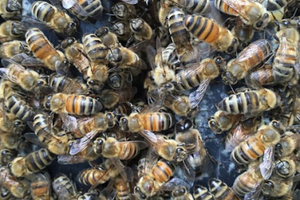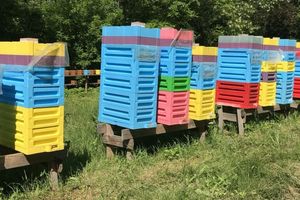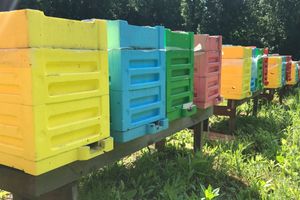.jpg)
Optimizing honey harvesting is extremely important for every beekeeper, as it not only affects the amount of honey collected but also the overall efficiency and profitability of the apiary. It is important to understand the factors that influence bee productivity and how to maximize the results of your work. The choice of the right hive, bee care methods, and other beekeeping products play a key role in achieving success.
Seasonal honey harvest indicators
One of the key aspects of successful beekeeping is understanding how much honey can be harvested from a single hive during the season. This depends on various factors, including the time of year, the condition of the bee colony, and natural conditions.
How much honey does one hive produce per season?
Typically, one hive can produce between 20 and 50 kg of honey per season, depending on conditions and the effectiveness of bee care. Some beekeepers, using the most modern care and colony management methods, can achieve even higher yields.
Other beekeeping products
In addition to honey, other valuable products such as propolis and pollen can be obtained from the hive. It is important to know the volumes of these products that can be collected and how this affects the overall productivity of the apiary.
How much propolis can be collected from a hive?
From one hive, about 100-300 grams of propolis can be collected annually. Propolis is an important product used in medicine and cosmetics for its antiseptic and anti-inflammatory properties.
How much pollen can be collected from one hive?
The amount of pollen that can be collected from one hive usually ranges from 1 to 7 kg per year, depending on the intensity of collection and environmental conditions. Pollen is a valuable source of protein for the bee colony and is used in food supplements.
Increasing productivity
To increase apiary productivity, beekeepers use various methods and strategies. From choosing the right hive to improving bee care techniques, everything matters.
How to increase hive productivity?
-
Choosing the right hive: Hives with high thermal insulation, such as polystyrene hives, help retain heat in winter and coolness in summer, reducing stress for bees and increasing their productivity.
-
Optimal hive placement: The placement of hives in the apiary should provide good access to nectar plants and protection from the wind.
-
Regular care: Regular inspections and maintenance of the hives help detect and address issues such as diseases or pests in a timely manner.
-
Ensuring sufficient ventilation: In summer, it is important to ensure sufficient ventilation of the hives to avoid overheating.
-
Feeding the bees: In case of insufficient natural nectar, special feeds can be used to maintain the strength of the bee colony.
Honey collection volumes
Understanding the volumes of honey collected from a single hive helps the beekeeper plan their work and increase efficiency. It is important not only to know how much honey can be collected but also how it depends on various conditions.
How many liters of honey from one hive?
One hive can produce between 15 and 40 liters of honey per season, depending on the bees' productivity and harvesting conditions. The difference in the amount of liters and kilograms of honey is due to the density of honey, which can vary depending on its composition.
Optimizing honey harvesting is a key element of successful beekeeping. By using effective methods and strategies, the productivity of your apiary can be significantly increased. Considering seasonal indicators, the collection of other beekeeping products, and the proper placement of hives, beekeepers can maximize their yields and ensure the health of their bees.
We recommend regularly analyzing productivity indicators, adapting bee care methods, and implementing new technologies to achieve the best results in honey harvesting. By choosing the right hives and ensuring optimal conditions for the bees, you can achieve high productivity in honey production and other beekeeping products. The productivity of the apiary can be increased by using high-quality hive kits that are easy to maintain and transport.











